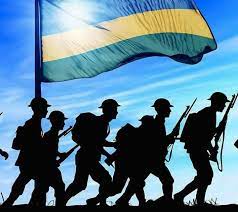Regional
Kwibohora27: What we owe to our liberators

From the onset, the armed struggle waged by the Rwandan Patriotic Front (RPF-Inkotanyi) through its armed wing, the Rwandan Patriotic Army (RPA), aimed at securing the freedom of Rwandans from the oppressive Juvenal Habyarimana regime. It aimed at ensuring that there was a country where every citizen enjoyed their inherent right of belonging. RPF-Inkotanyi sought to end the suffering, for more than three decades, by many Rwandans who had been banished from their country and ensure they are repatriated to enjoy their motherland.
Its liberation struggle aimed to address unacceptable governance malpractices that prevailed at the time and set the country to a development path in which all Rwandans would equally participate. As the struggle progressed, an imposing obligation emerged. On April 7 1994, the then regime launched the Genocide against the Tutsi. The immediate mandate for RPA forces was then to stop the 1994 Genocide, one of the biggest humanitarian catastrophes of the 20th Century. More than 10,000 people were killed daily.
At first, stopping the Genocide seemed like a receding mirage. It was widespread and an infrastructure around it had been built over the years in so many ways. However, the brave men and women of the RPF/A dared to do what many thought was “mission impossible” until four years of their bravery and sacrifice finally paid off. They not only stopped the Genocide but also accomplished their original mandate.
For the purpose of this article, I want to chronicle June 1994. It was a determining period of the victory of RPF-Inkotanyi in so many ways. At the beginning of June, the fighters got exciting news that the RPA's 157 mobile force had captured the Gako military installation located in present-day Bugesera District. At the same time, forces had managed to liberate Bugesera and were able to cross the Amayaga region to Nyanza. This strategic move of the RPA paralyzed the genocidal regime. It allowed for rescue operations in areas like Kabgayi and other surrounding regions.
Earlier, on May 22, 1994, the RPA force in Kigali had captured Kanombe and managed to link the eastern to the central axes of the front. This allowed the forces to open the routes to Kabuga from central Kigali. You do not have to be a graduate of military science to see the genius in this move, both for military and rescue operations which were being carried out simultaneously. In June 1994, the RPA also took over more strategic high grounds around Kigali like Mt Rebero, Mt Kigali and Mt Jali, which gave them a strategic advantage over the enemy. This positioned the RPA for the final defeat of the genocidal forces.
Despite the genius that the forces displayed with their able leadership, it did not come easy. Many paid the ultimate sacrifice. Others lost their limbs but lived. As we value the sacrifices made by these gallant sons and daughters of the land so that we get to live in a country which every Rwandan can proudly call theirs, one thing we ought to commit to is to never take this sacrifice for granted. Our current endeavors should build on the gains of Rwanda’s liberation struggle so as to keep the country on its transformational trajectory. We should develop the pragmatism that will bring about sustainable solutions to all the problems facing our society.
Determination, hard work, discipline and accountability, among other great values, should characterize us all if our liberation journey is to be sustained. As we approach the 27th liberation celebrations, or Kwibohora27, it is important that we reflect on the aspirations of our liberators and commit to sustaining their legacy, by actions.
To all the liberators I say, Mwarakoze Nkotanyi.

